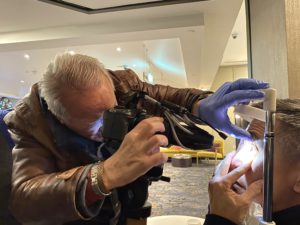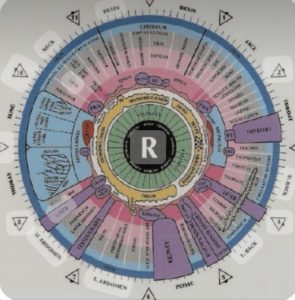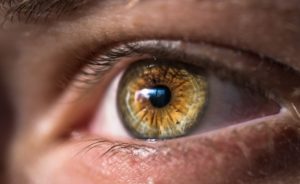How To Treat Rashes Using Iridology
Rashes are abnormal changes in skin colour or texture. They usually occur from skin inflammation, which can have many causes. There are many types of rashes such as eczema, rosacea, dermatitis and psoriasis. The area of the skin affected by the rash is often irritated, swollen and can even be itchy or painful. Rashes on lighter skin tone is normally red. On darker skin tones, they may be purple, grey or white.
There are various types of rashes as named above.
Eczema are often found on hands and forearms. The skin is itchy, scaly or raw and may have blisters that weep, ooze or become crusty.
Rosacea is a chronic (long term) skin disease that goes through cycles of fading and relapse. Relapses may be triggered by some spicy foods, alcohol, stress, sunlight and intestinal bacteria. Common symptoms of rosacea include facial redness, raised red bumps, skin dryness and sensitivity.
Dermatitis typically appears where your skin has touched an irritating substance such as chemicals, laundry detergent and certain soaps. It can be itchy, scaly or raw.
Psoriasis is scaly, silvery, sharply defined skin patches commonly located on the scalp, elbows, knees and lower back. It may be itchy or asymptomatic (shows no symptoms).
Iridology is a non invasive method of uncovering potential health conditions, even before the symptoms arise. This is done by examining the coloured area of the eye, known as the iris. Iridology has been practiced in various forms for many hundreds of years. It was initially practiced using a magnifying glass and torch, which some practitioners still use to date.
 Modern Iridology cameras have since been developed, enabling digital photos to be taken. This is useful as it enables both the Practitioner and the Patient to see the photos and understand better the Iridology Findings.
Modern Iridology cameras have since been developed, enabling digital photos to be taken. This is useful as it enables both the Practitioner and the Patient to see the photos and understand better the Iridology Findings.
Digital Iridology photos also saves the Practitioner time and effort trying to describe and explain what has been seen and enables a record to be kept so that these photos can be compared with future photos to monitor the progress or deterioration in the specific organ. Necessary steps can then be taken to amend recommendations as required.
Watch and learn from our short video re How To Treat Rashes Using Iridology.
 Iridology charts such as the example shown on the right are used by Iridologists to make observations to various organs including the digestive system. The Iridology charts have been created after observation of a variety of irises over the years. The Iridology Charts divides the iris into zones that represent certain parts of the body.
Iridology charts such as the example shown on the right are used by Iridologists to make observations to various organs including the digestive system. The Iridology charts have been created after observation of a variety of irises over the years. The Iridology Charts divides the iris into zones that represent certain parts of the body.
Each marking and zone in the iris represents a different aspect or organ of the human body. Iridologists can discover some markers of inflammation and toxicity in certain specific areas. For example, the orange ring in the Right Eye Iridology Chart indicates the Digestive System, in particular the Ascending and Transverse Colon.
The main use of Iridology is to detect main weaknesses in the body. With early detection, even before any symptoms arise, prompt treatment or lifestyle changes can be made to prevent or reverse the specific weakness in the body’s organs. Most illnesses are caused by issues in the Digestive system, including rashes. Our skin is our largest organ and toxins are normally expelled through our skin.
Digestive Issues
Problems with the digestive system, in particular, the stomach and intestines can present themselves via discolorations around the pupil. Different darker tones in the iris, especially just outside the pupil indicates a toxic digestive system. This could be caused by constipation and constant intake of junk and processed foods. Depending on the location of the darker tones, this could indicate blockages in the ascending, transverse, descending and/or sigmoid colon. The spokes seen in the iris photo on the right indicates toxicity that are affecting almost every part of the person’s body.
Using Iridology, the severity of toxicity or blockages in the digestive system, resulting in rashes and other skin problems can be measured. The patient can then be advised on how much more fibre intake is required daily. When you visit a Wellness Clinic such as ours or book in for a pre-consultation chat, we can recommend natural fibre from foods and supplements that you can take that has years of proven results.
We do not recommend creating your own fibre mixtures especially from rough insoluble fibres which could cause you to injure your digestive system and anus as too much of the incorrect fibre mixture can either be too harsh or give you diarrhea.
When you visit a Skin Specialist or General Practitioners with regards to rashes, they are most likely to prescribe the use of chemical creams that do not address the root cause of the rashes. These are temporary and quick fixes. However, without addressing the root cause, these rashes are likely to keep re-occuring. Do therefore get in touch with a Natural Health Practitioner such as Our Clinic so that we can help you treat the rash permanently.
To learn more about How To Treat Rashes Using Iridology, check out our other related blogs:
Iridology Pictures and Meanings
Can You See Illness In Your Eyes?
Can Iridology Detect Heart Problems?
NEXT STEPS
Book in a complimentary 15 minutes Zoom call with us (valued at £99) to enable us to clarify questions you may have on a specific health concern.




